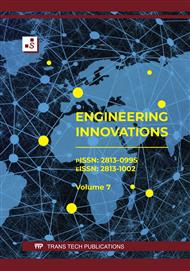p.7
p.19
p.29
p.39
p.51
p.61
p.75
p.89
p.95
Designing a Roundabout to Overcome Traffic Congestion at a Four-Armed Intersection
Abstract:
The growth rate of vehicles is increasing in most metropolitan areas, and as a result, traffic congestion is also increasing, particularly at intersections. Traffic congestion is one of the major problems faced by most of the developing countries despite the measures taken to mitigate and reduce it. In order to overcome traffic congestion, especially in four-way intersections with increasing growth rate of vehicles, roundabout design is a popular traffic management solution in urban areas. In most countries, roundabouts have been widely adopted as an alternative to signalized intersections due to their ease of operation with fewer conflict points. In a metropolitan city like Chennai, there are numerous areas facing traffic congestion. This study aims to design a roundabout for a four-armed intersection located at one of the most congested areas in Chennai, India - Porur Junction. It is a four-armed intersection with traffic on all approach roads and controlled by a signalized intersection. The effective solution would be an elevated roundabout bridge by connecting the major roads towards Poonamallee and Guindy with a two lane road and the minor roads towards Kundrathur and Arcot Road with two separate lanes, one for entering and the other for exiting the junction. The efficiency of the elevated roundabout bridge is that it has speed breakers in the entry ramp which slows down the vehicle & has a central island structure which is used to effectively manage the traffic without stopping the vehicles. After passing through the Central Island, vehicles can exit the barrier at a higher speed than the entry speed in a clockwise direction.
Info:
Periodical:
Pages:
95-103
Citation:
Online since:
October 2023
Authors:
Keywords:
Permissions:
Share:
Citation:


